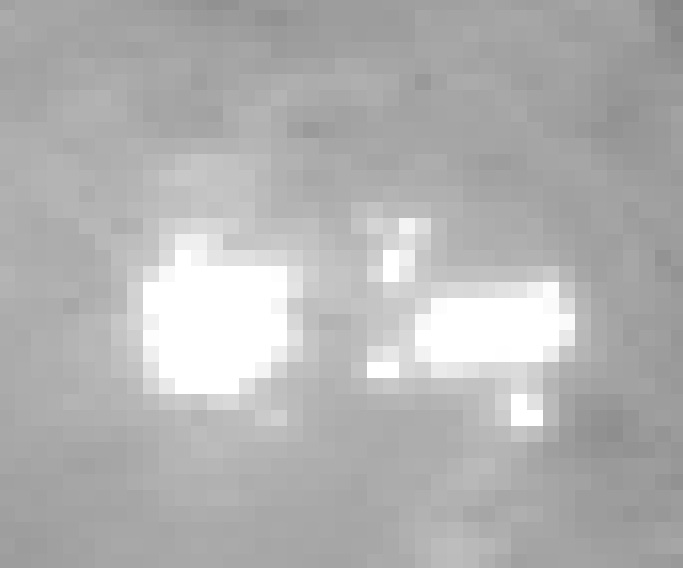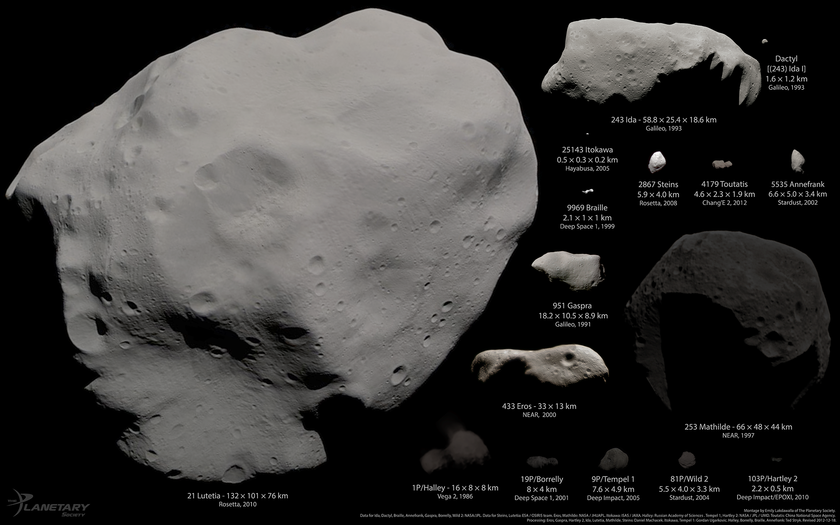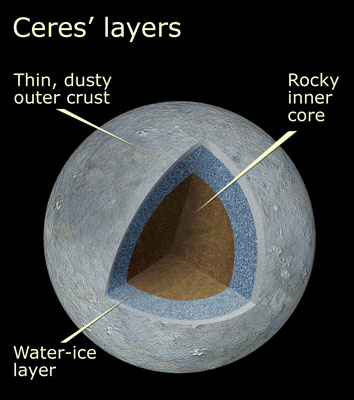It looks like you're using an Ad Blocker.
Please white-list or disable AboveTopSecret.com in your ad-blocking tool.
Thank you.
Some features of ATS will be disabled while you continue to use an ad-blocker.
share:
If an 'ice' shouldn't we see some kind of illuminated off-gassing about the bright spots? There doesn't appear to any...even when the bright spots
are on the horizon where we would expect any plume to be maximally profiled.
a reply to: VoidHawk
Bingo, I'd say. Can they tell us what wavelength the light/bright spots are at? If so then it might be possible to determine what element is fluorescing. Would also explain why their is no heat signature, as some elements can glow at just above above zero.
Something fluorescent? as in, giving off its own light?
Bingo, I'd say. Can they tell us what wavelength the light/bright spots are at? If so then it might be possible to determine what element is fluorescing. Would also explain why their is no heat signature, as some elements can glow at just above above zero.
The spots are not emitting light. They're just highly reflective compared to the rest of the surface. So when the exposure is set to be correct for
the whole of Ceres, the spots become overexposed. It'll be interesting to see if them try taking some images with the exposure set to the spots.
That means the rest of the surface will probably appear black, but it would bring out detail in the spots.
Magnified one of the latest images of the bright spots, measured them, and the spaces between them. Minor deviations, which could be caused by
anything from nearby topographic features to digital artifacts, were disregarded.
The results were as follows: The largest area is squarish in appearance, with substantially straight sides, arranged at 90 degrees aspect to one another. The general width and height of the area are the same. The next largest area is rectangular, twice as long as it is wide. It's straight sides are aligned with those of the squarish area, both vertically and horizontally. The long axis of the rectangle points directly at the center of the square.
The width of the square is the same as the length of the rectangle. Further, the space between the square and the rectangle is the same as the width of the square. Two of the newly discovered small bright spots are positioned at about equal angles and distances from the two corners of the rectangle nearest the square.
Quite a regular-appearing arrangement for a geological phenomenon.
The results were as follows: The largest area is squarish in appearance, with substantially straight sides, arranged at 90 degrees aspect to one another. The general width and height of the area are the same. The next largest area is rectangular, twice as long as it is wide. It's straight sides are aligned with those of the squarish area, both vertically and horizontally. The long axis of the rectangle points directly at the center of the square.
The width of the square is the same as the length of the rectangle. Further, the space between the square and the rectangle is the same as the width of the square. Two of the newly discovered small bright spots are positioned at about equal angles and distances from the two corners of the rectangle nearest the square.
Quite a regular-appearing arrangement for a geological phenomenon.
a reply to: Ross 54
Considering this image below is the highest resolution we have available, how did you discern that what looks regular and geometric were not just artifacts of the large pixels?

Considering this image below is the highest resolution we have available, how did you discern that what looks regular and geometric were not just artifacts of the large pixels?

edit on 5/15/2015 by Soylent Green Is People because: (no reason given)
a reply to: Urantia1111
There's one frame where the crater's edge casts a shadow over one of the bright spots, meaning they are not self illuminated.
There's one frame where the crater's edge casts a shadow over one of the bright spots, meaning they are not self illuminated.
originally posted by: SkepticOverlord
The "bright spots" look to be either emitting their own light, or have a reflection so bright, it's casting light on the objects/ground around it.
Notice as the brightness is reduced and contrast increased, we see bright areas on the ground around the "bright spots."
This is taken from NASA's full-resolution TIFF original.
It's called 'bloom', which does not necessarily mean it's casting light on the objects / ground around it.
To me it looks like the brightness levels are being clipped and thus making it seem perfect white on each frame. This gives the illusion of it
emitting light. They need to reduce the gain on the images to stop any clipping.
My guess is that a huge spacecraft recently crashed there . Maybe the fuel or whatever this craft used exploded over this area .
It looks if it broke into pieces just above the crater . Maybe this unknown fluid keeps on burning off energy?
If it would be some kind of city or mining rig I would think the light would be.more dimmed and pattern like. It more looks like some crashed scattered place..
It looks if it broke into pieces just above the crater . Maybe this unknown fluid keeps on burning off energy?
If it would be some kind of city or mining rig I would think the light would be.more dimmed and pattern like. It more looks like some crashed scattered place..
edit on 0b49America/ChicagoFri, 15 May 2015 14:56:49 -0500vAmerica/ChicagoFri, 15 May 2015 14:56:49 -05001 by 0bserver1
because: (no reason given)
originally posted by: SkepticOverlord
The "bright spots" look to be either emitting their own light, or have a reflection so bright, it's casting light on the objects/ground around it.
Notice as the brightness is reduced and contrast increased, we see bright areas on the ground around the "bright spots."
This is taken from NASA's full-resolution TIFF original.
That's because Ceres itself is incredibly dark. Different asteroids have different levels of brightness called albedo. So by reducing the brightness and hiking up the contrast you're not really showing anything abnormal since you're starting with an object where the contrast between the bright areas and dark area are already high. All you're doing is producing digital artifacts by doing that.

edit on 15-5-2015 by JadeStar because: (no reason given)
But NASA can not dismiss this story as ice or some other fable whatsoever. Something light up in the dark in my view be no snow. But they have to
come up with a very good explanation for this...
originally posted by: Soylent Green Is People
originally posted by: bobs_uruncle
a reply to: Kapusta
Snow or ice, even a solid gas like oxygen or carbon dioxide would have sublimated into the vacuum of space millions or billions of years ago. Only thing I can think of that would be natural would be the remnants of a meteor or asteroid, one that somehow left a reflective surface in the fragments.
Cheers - Dave
Perhaps that ice is somehow continually being fed from the sub-surface ice that is thought to be just below the surface (Ceres is believed to be composed of up to 25% water-ice):
Source:
NASA -- Ceres' Overview
Anther possibility is that these are salt-flats left behind by salty or mineral-rich water that sublimated away, leaving only the mineral salts behind. It's also possible that the high mineral content or saline content of the water ice is preventing it from sublimating easily (some minerals can affect the rate of sublimation), so the mineral salt flats could still have a bit of a water-ice component.
Maybe this salty-icy patch is being fed slowly, and the rate of sublimation is slowed by the mineral content, so that's why this could continue for a long time without exhausting Ceres' supply of water. However, maybe the rate that this is being re-fed is fast enough to allow the patch to remain uncovered, rather than collect a space-dust covering.
Good points, that is a possibility, if you take a glass of water that is supersaturated with salt and place it in a vacuum, the water will boil off very quickly at first, slowing down as the upper surface layers dry out possibly forming what looks a little like a volcano. The questions become, how permeable is the crust of Ceres, how long has the "water" (if it is fact water) been in place and what is the estimated volume of the alleged water. A bit of math would determine the migration time and the length of time to complete sublimation. Being only about 600 miles in diameter with almost no atmosphere or no atmosphere at all, I would think if the outer layers are dust, the process would be pretty quick. As you know, even water as solid ice sublimates in a vacuum, during environmental temperature increases and/or under direct solar influence.
Cheers - Dave
Its where George Bush Jnr is still holding Osama Bin Laden, those are the spot lights on the compound..
As for the gif, I'm more interested about the objects that appear its it near the bright area's...
As for the gif, I'm more interested about the objects that appear its it near the bright area's...
originally posted by: 0bserver1
My guess is that a huge spacecraft recently crashed there . Maybe the fuel or whatever this craft used exploded over this area .
It looks if it broke into pieces just above the crater . Maybe this unknown fluid keeps on burning off energy?
If it would be some kind of city or mining rig I would think the light would be.more dimmed and pattern like. It more looks like some crashed scattered place..
Of course...why wouldn't you jump to that conclusion? Can't explain it RIGHT AWAY?...its got to be aliens.
But we need to research this and look at other......ALIENS!
another image artefact √= (π/T)2
edit on 16-5-2015 by AthlonSavage because: (no reason given)
a reply to: Kapusta
No, i don't agree with your theory. As reasonable and as sensible as it sounds, i have a problem with the snow and / or ice theory, and here's why.
For those very bright areas to be snow or ice, it would have to be reflecting the light from the sun..and if it were doing that, the intensity and apparent luminosity would change as the ice angled away from the glare of the sun...it doesn't appear to do so, instead remaining as close to being a constant brightness as my eyes can gauge.
I'd like to see images taken when that crater in particular was not in direct sunlight...if it was still emitting light whilst out of the sun (at 'night'), then we'd know for certain it can't be anything reflective, but instead, as i suspect, it is somehow being self generated or a locally produced phenomena.
Which doesn't mean ET or domes or something similar btw, it could still be a perfectly natural phenomena, but one that doesn't rely on light from the sun to shine like a 10000w light bulb!
No, i don't agree with your theory. As reasonable and as sensible as it sounds, i have a problem with the snow and / or ice theory, and here's why.
For those very bright areas to be snow or ice, it would have to be reflecting the light from the sun..and if it were doing that, the intensity and apparent luminosity would change as the ice angled away from the glare of the sun...it doesn't appear to do so, instead remaining as close to being a constant brightness as my eyes can gauge.
I'd like to see images taken when that crater in particular was not in direct sunlight...if it was still emitting light whilst out of the sun (at 'night'), then we'd know for certain it can't be anything reflective, but instead, as i suspect, it is somehow being self generated or a locally produced phenomena.
Which doesn't mean ET or domes or something similar btw, it could still be a perfectly natural phenomena, but one that doesn't rely on light from the sun to shine like a 10000w light bulb!
“What is amazing is that you can see the feature while the rim is still in the line of sight,” said Andreas Nathues, a planetary scientist at the
Max Planck Institute for Solar System Research in Göttingen, Germany. Nathues, who leads the team for one of the Dawn cameras, showed the images on
March 17 at the Lunar and Planetary Science Conference in The Woodlands, Texas.
The pictures reveal the spots even when they are near the edge of Ceres, when the sides of the impact crater would normally block the view of anything confined to the bottom. The fact that something is visible at all suggests that the feature must rise relatively high above the surface. Are we seeing ice-covered mountain peaks? Seems plausible until one asks why the surface of a moon should have so FEW mountains with ice on them that reflect sunlight! If this were the cause, there would surely be far more bright spots or groups of spots on the surface. As the light has been established to originate from altitudes high ABOVE the surface, the only natural alternative for such regions of high albedo is gas/smoke plumes issuing high above ground level from active volcanos. But wouldn't such material look dark, not bright, if it were volcanic ash/gas/smoke? And wouldn't the spots keep changing shape due to sunlit smoke/gas drifting away? As far as I am concerned, there is STILL no satisfactory, natural explanation for the bright spots.
The pictures reveal the spots even when they are near the edge of Ceres, when the sides of the impact crater would normally block the view of anything confined to the bottom. The fact that something is visible at all suggests that the feature must rise relatively high above the surface. Are we seeing ice-covered mountain peaks? Seems plausible until one asks why the surface of a moon should have so FEW mountains with ice on them that reflect sunlight! If this were the cause, there would surely be far more bright spots or groups of spots on the surface. As the light has been established to originate from altitudes high ABOVE the surface, the only natural alternative for such regions of high albedo is gas/smoke plumes issuing high above ground level from active volcanos. But wouldn't such material look dark, not bright, if it were volcanic ash/gas/smoke? And wouldn't the spots keep changing shape due to sunlit smoke/gas drifting away? As far as I am concerned, there is STILL no satisfactory, natural explanation for the bright spots.
new topics
-
Regent Street in #London has been evacuated due to a “bomb threat.”
Other Current Events: 17 minutes ago -
It’s Falling…
Philosophy and Metaphysics: 1 hours ago -
Steering the Titantic from the Drydock.
Rant: 4 hours ago
top topics
-
House Passes Laken Riley Act
Mainstream News: 16 hours ago, 24 flags -
Steering the Titantic from the Drydock.
Rant: 4 hours ago, 9 flags -
Hearing more ambulances lately
Medical Issues & Conspiracies: 15 hours ago, 8 flags -
Los Angeles brush fires latest: 2 blazes threaten structures, prompt evacuations
Mainstream News: 15 hours ago, 7 flags -
Paramilitary Leaks - John Williams
Whistle Blowers and Leaked Documents: 13 hours ago, 7 flags -
The more I think about it
General Chit Chat: 17 hours ago, 4 flags -
Some sausage, some chicken, some sauce, some onions and some garlic...and some peppers!
Food and Cooking: 15 hours ago, 3 flags -
It’s Falling…
Philosophy and Metaphysics: 1 hours ago, 3 flags -
Regent Street in #London has been evacuated due to a “bomb threat.”
Other Current Events: 17 minutes ago, 1 flags
active topics
-
Steering the Titantic from the Drydock.
Rant • 20 • : Shoshanna -
Los Angeles brush fires latest: 2 blazes threaten structures, prompt evacuations
Mainstream News • 16 • : BeyondKnowledge3 -
Greatest thing you ever got, or bought?
General Chit Chat • 27 • : mysterioustranger -
Regent Street in #London has been evacuated due to a “bomb threat.”
Other Current Events • 0 • : putnam6 -
Russia Ukraine Update Thread - part 3
World War Three • 6901 • : bastion -
Hearing more ambulances lately
Medical Issues & Conspiracies • 3 • : mysterioustranger -
Some sausage, some chicken, some sauce, some onions and some garlic...and some peppers!
Food and Cooking • 3 • : mysterioustranger -
It’s Falling…
Philosophy and Metaphysics • 1 • : mysterioustranger -
ILLUMINATION: Dimensions / Degrees – Da Vincis Last Supper And The Philosophers Stone
Secret Societies • 23 • : CarlLaFong -
House Passes Laken Riley Act
Mainstream News • 18 • : Xtrozero

